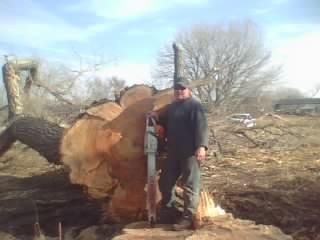They also rate cottonwood as easy to split. Caution: that means it's almost dead dry. Green cottonwood is mean as the dickens, stringy, and almost impossible to split. Elm is the same way, but only when green. When dry or after the bark starts falling off, most elm splits surprisingly easy. I treat cottonwood and elm the same way: season in the round first, split second. In addition, many species of hard maple are also not easy to split when green.
I cut one Cottonwood back in the 70s and that is the last one I will every cut. Nothing would split it, wedges just sunk in, ax and maul the same. So I figured to let it dry another year. Same story. I finally had to cut every 16" round intp twp 9
rounds before the splitter would work on it.
I was told that cottonwood was a preferred wood for barn floors back when. I can see why
Harry K





























































